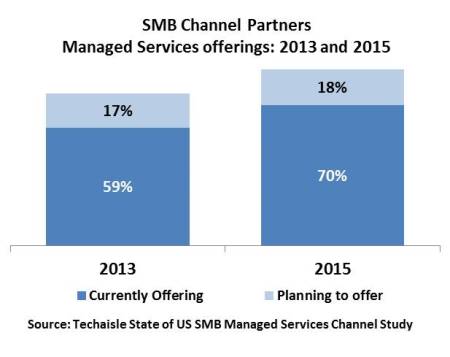On 7th January, Harry Brelsford, Founder, SMBNation had a Q&A webinar with Techaisle on the challenges of SMB-focused MSPs and cloud channel partners. Given below are his questions and Techaisle’s responses.
Harry: Referring to this blog SMB IT Channel has reached an inflection point can you better define “inflection point?” does that mean a tipping point before collapse or a pivot?
Anurag: It is a pivot not a collapse – “one stop solution shop” is dying as each of cloud, mobility, managed services and CI/virtualization gets too complex for generalists to manage. The IT channel is changing, permanently and in ways that are entirely different from what we have seen in the past. In the same way that “cloud” refers to a very wide range of very different IT models and deployments, “the channel” is becoming a generic phrase that describes a set of business approaches that is increasingly specialized and fragmented. The areas that I just mentioned – cloud, mobility, managed services, virtualization - today, there is substantial overlap across these categories – but it is our belief that over time, success in any one of these areas will require discrete focus and investment, reducing opportunity for equal success in/focus on other competencies.
Harry: I like how you provide historical context – the comment you made regarding a market defined by the adoption of a particular type of technology (e.g. small Business Server (SBS)) is a point well taken by this crowd. But I’m not sure I’m seeing a cult-like community emerge around any particular cloud product (e.g. Office 365). Would you agree?
Anurag: Talking from a channel POV, agreed. If there is a cult growing, it is around Hybrid IT; possible that Cloud Broker business model will get to this level as well. SMB organizations will accept the notion that their focus on cloud needs to evolve into a focus on hybrid IT, as firms realize that their platforms and management scope must encompass on and off-premise systems. Truth of the matter is that Office365 also disintermediates the channel. There is no stopping an organization from going directly to Microsoft and purchasing and installing Office 365 as opposed to using SBS from a channel partner in the past. It is a classic cloud vs. on-premise conundrum. The ecosystem should evolve but it will evolve around integration of data and applications.
Harry: Along those lines, I just had a conversation that I’m not seeing the same ecosystem building up around a cloud product or service. For example, we’d like to take credit that SBS really helped build Trend Micro and today it’s a $1b company. But I’m not seeing these add-ons in the same way with Office 365. The only thing I can point to are a few SharePoint snap-ins and a few tools (migrations, etc.). Do you agree or disagree?
















